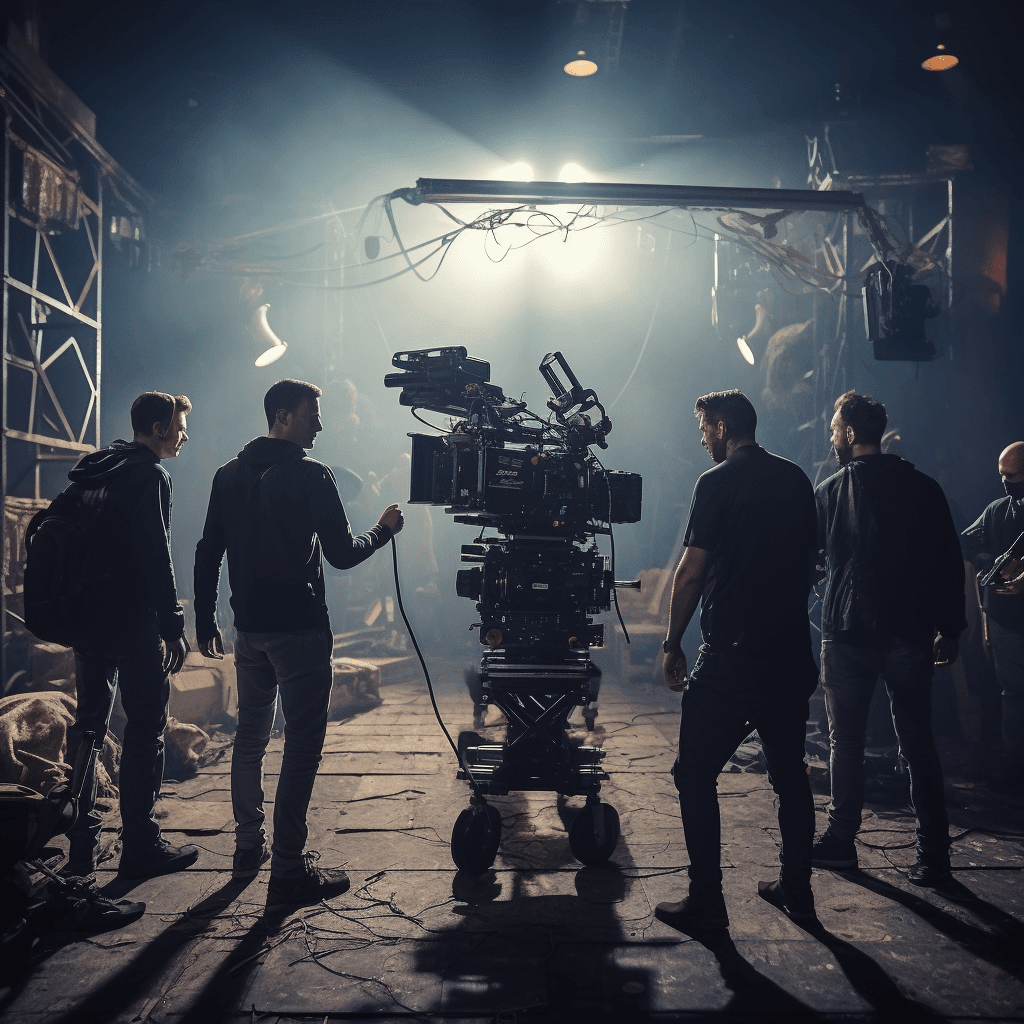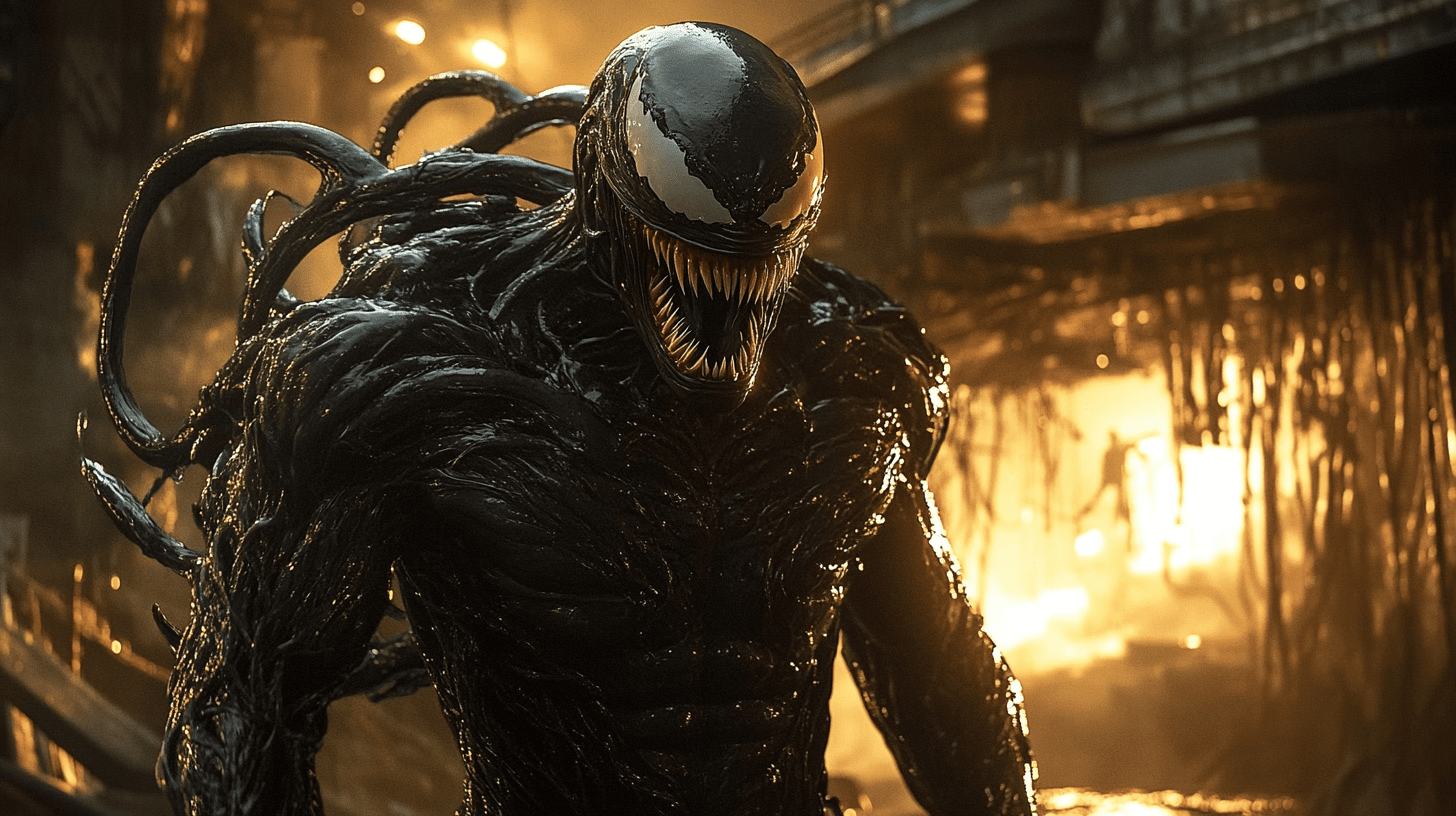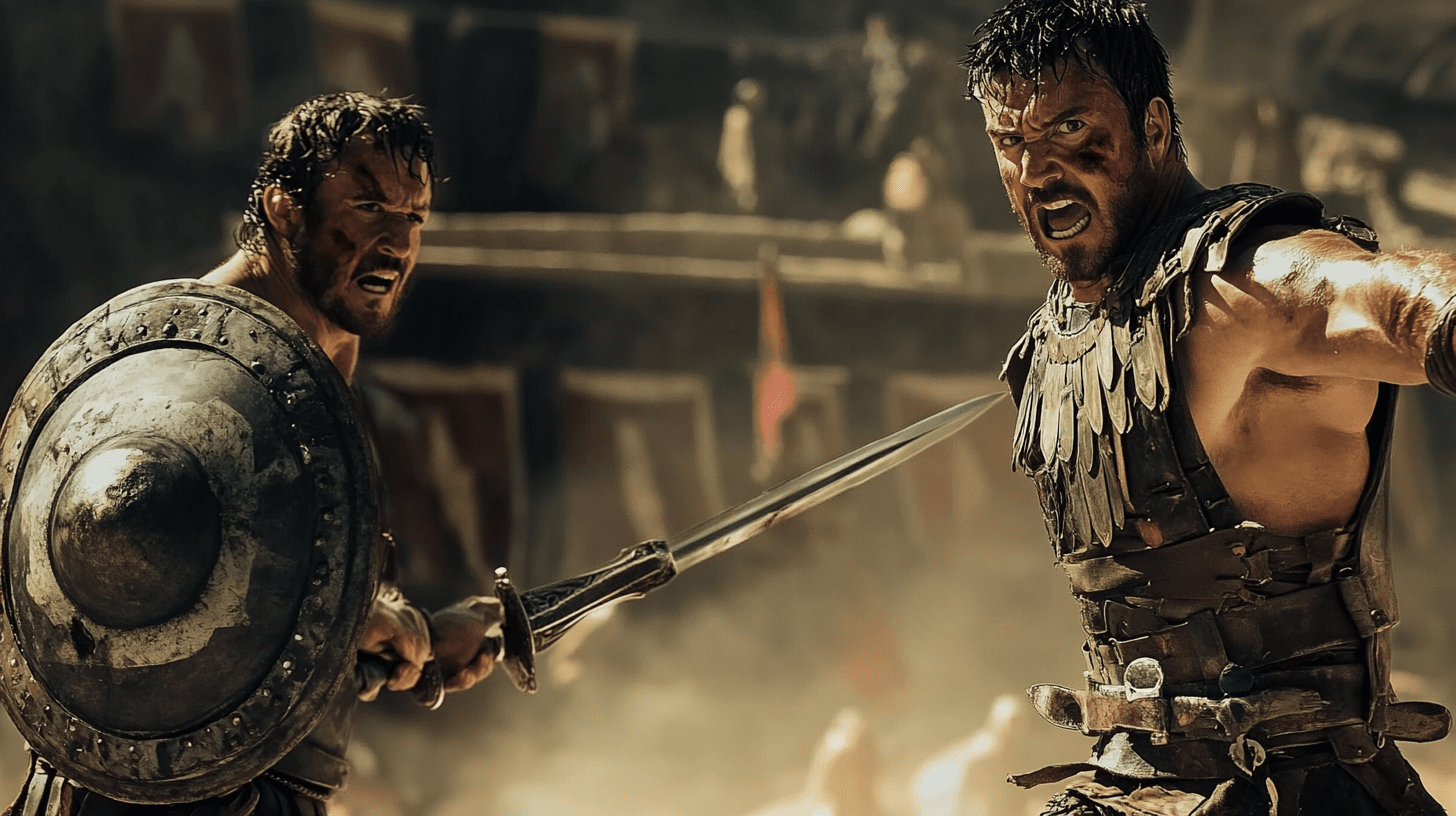What's After the Blog?
Genres • Criticism
The Art of Creating Suspense in Thriller Movies
Delve into the art of creating suspense in thriller movies, exploring the intricate techniques filmmakers use to captivate and keep audiences on the edge of their seats.
June 22, 2024

The Art of Creating Suspense in Thriller Movies
Introduction
Suspense is the lifeblood of any thriller movie, the essential ingredient that transforms a simple story into a gripping cinematic experience. It’s the art of keeping the audience on the edge of their seats, constantly guessing and emotionally invested in the unfolding plot. In thriller movies, the suspense is carefully crafted through a blend of storytelling, visual effects, sound design, and masterful direction. Through ATM (What’s After the Movie), movie enthusiasts can dive into a myriad of thriller films, uncovering the layers of suspense that make them unforgettable. From classic Hitchcockian suspense to modern psychological thrillers, the journey of crafting tension in cinema is as diverse as it is fascinating.
The Foundations of Suspense in Cinema
The creation of suspense in films begins with understanding its basic elements. Suspense is not just about surprise or shock; it’s about creating anticipation and prolonging the resolution of a crucial plot point or character’s fate. It’s the delicate balance between knowing and not knowing, the tension that arises from being provided with just enough information to whet the appetite for more.
Alfred Hitchcock, the master of suspense, famously compared suspense to a bomb under a table. If the bomb explodes, that’s surprise, but if the audience knows the bomb is there but not when it will go off, that’s suspense. Movies like Psycho and Rear Window are prime examples, where Hitchcock expertly plays with audience expectations, building tension to an almost unbearable level before any actual ‘scary’ event occurs.
In more contemporary cinema, directors like Christopher Nolan have taken a different approach. In Inception, Nolan creates suspense through complex narrative structures, where the suspense is rooted in the intricacies of the plot and the blurring lines between reality and illusion. Similarly, David Fincher’s Fight Club uses unreliable narration to build suspense, keeping the audience unsure of what to believe.
Suspense can also be found in the subtleties of a story, where films like Gone Girl use character development and plot twists to create a sense of unease. The suspense is in the unknown motives and the unpredictability of the characters, compelling the audience to stay engaged as the mystery unravels.
In conclusion, the foundation of suspense in cinema is about engaging the audience’s emotions and keeping them actively involved in the narrative. It’s a game of anticipation, surprise, and careful revelation that, when done right, makes thriller movies an exhilarating experience.
Masters of Suspense: Learning from the Best
The realm of thriller movies is home to several auteurs who have mastered the art of creating suspense. Alfred Hitchcock, often hailed as the ‘Master of Suspense,’ crafted his films with meticulous attention to detail, using camera angles, pacing, and narrative twists to heighten the sense of anticipation. His film Psycho remains a quintessential example, with the infamous shower scene being a masterclass in building and releasing tension. The scene’s effectiveness lies not in graphic violence, but in the rapid editing, eerie music, and the shocking suddenness of the attack, which leaves viewers on high alert for the unexpected.
Another luminary in the art of suspense is Christopher Nolan, whose films often intertwine complex narratives with suspenseful elements. In Inception, Nolan crafts suspense through a layered story structure, where the tension escalates as the characters navigate multiple levels of dreams. The suspense is in the uncertainty - both for the characters and the audience - about the nature of reality.
Recent years have seen directors like David Fincher and Denis Villeneuve adding their unique touch to the genre. Fincher’s Se7en uses the suspense of the unknown, where the horror lies in what is not seen, and the anticipation of the next grim ‘sin.’ Villeneuve’s Prisoners employs a slow-burn approach, where the suspense builds gradually, stemming from the moral dilemmas faced by its characters.
Building Tension: Narrative and Pacing
The narrative structure and pacing of a film are crucial in building suspense. A well-crafted narrative in a thriller movie often involves carefully revealing information, maintaining a delicate balance between keeping the audience in the dark and providing them with enough clues to stay engaged. The pacing needs to be tight enough to keep the story moving, but not so fast that it overwhelms or confuses the audience.
One key technique is the use of red herrings, misleading clues that divert the audience’s attention and heighten the surprise when the true plot is revealed. Films like Gone Girl excel in this, where the audience is constantly led to question the characters’ motives. Another method is the cliffhanger, often employed at the end of scenes or acts, leaving the audience in suspense about what will happen next. The Silence of the Lambs is a masterful use of this technique, with its climax leaving viewers on the edge of their seats.
The manipulation of time is another effective tool in creating suspense. Non-linear narratives, time jumps, or countdowns can all add a sense of urgency and tension. Memento, with its reverse chronological order, keeps the audience guessing until the very end, as they piece the story together just as the protagonist tries to make sense of his fragmented memory.
In essence, building tension in a thriller movie is a meticulous process. It involves crafting a narrative that engages and misleads, pacing the story to maintain a steady buildup of suspense, and using cinematic techniques to keep the audience invested and on edge.
The Power of Sound and Music in Crafting Suspense
Sound and music are pivotal in amplifying suspense in thriller movies. The strategic use of soundtracks, sound effects, and silence can significantly enhance the tension in a scene. Iconic films like Jaws demonstrate how music can be used to create anticipation. The movie’s simple yet ominous two-note motif signifies the impending danger of the shark, even when it’s not visible on screen. This auditory cue heightens the viewers’ sense of dread and anticipation, making the eventual appearance of the shark all the more terrifying.
Sound effects also play a crucial role in building suspense. The subtle use of background noises, like creaking floors in a haunted house or the rustling of leaves in a thriller set in the woods, can create a sense of foreboding. A Quiet Place masterfully uses the absence of sound to create tension, where even the slightest noise could spell disaster for the characters.
The use of silence, or the sudden cessation of sound, can be equally effective in creating suspense. This technique often precedes a crucial or shocking moment in the film, as seen in The Dark Knight, where moments of silence are used to build tension before a significant event occurs. The interplay between silence and sound adds a dynamic rhythm to the narrative, keeping the audience on edge.
Cinematography and Visuals: Setting the Tone
The visual elements of a film – cinematography, lighting, and color palette – are integral in setting the tone and enhancing the suspense in thriller movies. The way a film is shot can significantly affect how the audience perceives and experiences suspense. For example, the use of close-up shots in Vertigo intensifies the feeling of claustrophobia and disorientation, while wide shots in Zodiac establish the vastness and isolation of the settings, heightening the sense of vulnerability.
Lighting is another powerful tool in creating mood and suspense. Low-key lighting with stark contrasts between light and shadow can create a sense of mystery and fear, as seen in classic noir films. The use of shadows can also be effective in suggesting the presence of danger or the unknown.
Color grading and the overall color palette of a film can also contribute to the suspenseful atmosphere. Cooler tones often evoke a sense of unease and detachment, whereas warmer tones might be used to lull the audience into a false sense of security before a sudden plot twist.
In conclusion, the cinematography and visual styling of a thriller movie play a crucial role in creating suspense. Through deliberate choices in camera angles, lighting, and color, filmmakers can manipulate the audience’s emotions, guiding their expectations and heightening the suspenseful experience.
Discover more about the enthralling world of thriller movies and the intricate techniques behind them on What’s After the Movie’s blog. Dive deeper into the art of cinema and explore the myriad ways in which filmmakers keep audiences captivated.
Psychological Elements: Playing with the Audience’s Mind
The use of psychological elements is a key aspect of creating suspense in thriller movies. Filmmakers often play with the audience’s mind by blurring the lines between reality and illusion, creating unreliable narrators, and presenting complex character psychologies. This manipulation not only engages viewers but also immerses them in the psychological landscape of the characters. In films like The Silence of the Lambs, the psychological interplay between Clarice and Hannibal Lecter adds depth to the suspense, as the audience is drawn into their cat-and-mouse game. Similarly, Shutter Island uses the protagonist’s unreliable perspective to create a sense of disorientation and suspense, leaving the audience questioning what is real and what is not.
Another technique is to build suspense through the exploration of universal fears and anxieties. Movies like The Sixth Sense tap into the fear of the unknown, while Gone Girl plays on the fear of betrayal and the complexity of human relationships. By tapping into these deep-seated emotions, thriller films can create a more visceral and engaging experience for the audience.
Conclusion
In crafting suspense in thriller movies, filmmakers employ a myriad of techniques ranging from narrative structures and pacing, to sound and music, to psychological manipulation. Each element works in concert to create an immersive and tense atmosphere that keeps audiences captivated. Exploring these films through resources like ATM (What’s After the Movie) can provide deeper insights into the art of suspense in cinema, revealing the meticulous craftsmanship behind the thrills and chills.
Invitation to Explore More
We hope this deep dive into the art of creating suspense in thriller movies has been a thrilling journey. The realm of thriller cinema is vast and full of creative techniques waiting to be explored. For more insights into the fascinating world of movies and the artistry behind them, we invite you to explore other blog posts available on What’s After the Movie’s blog. Whether you’re a film aficionado or a casual viewer, there’s always something new and exciting to discover in the world of cinema.
Continue reading

What's After the Movie?
Not sure whether to stay after the credits? Find out!
Check out our other apps:
Actors
Companies
Latest Movies
© 2025 What's After the Movie. All rights reserved.



















